Ditapis dengan

2011 ESP Code : International code on the enhanced programme of inspections d…
- Edisi
- 2013 Ed.
- ISBN/ISSN
- 978-92-801-1552-9
- Deskripsi Fisik
- vii, 294 p., 33 cm
- Judul Seri
- -
- No. Panggil
- REF MR IMO t
- Edisi
- 2013 Ed.
- ISBN/ISSN
- 978-92-801-1552-9
- Deskripsi Fisik
- vii, 294 p., 33 cm
- Judul Seri
- -
- No. Panggil
- REF MR IMO t
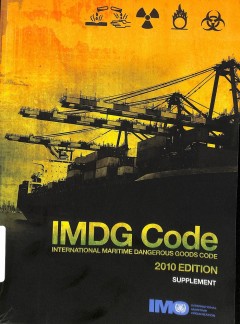
IMDG Code : International maritime dangerous goods code
The International Maritime Dangerous Goods Code lays out the regulatory framework for all aspects of handling dangerous goods and marine pollutants in sea transport, but does not include all details of procedures for packing of dangerous goods or actions to take in the event of an emergency or accident involving personnel associated with the IMDG Code that cover these aspects of the transport o…
- Edisi
- 2010 Editions
- ISBN/ISSN
- 978-92-801-1514-7
- Deskripsi Fisik
- v, 441 hlm., 33 cm
- Judul Seri
- -
- No. Panggil
- REF MR IMO i
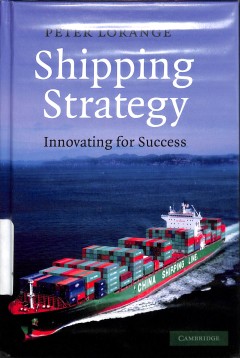
Shipping strategy : innovation for success
The shipping industry has an impact on each and every one of us every day. Ships transport the food we eat, the clothes we wear, the cars we drive, the materials used to build our homes, and the fuel that heats them. Yet traditional shipping companies - ones that combine various aspects of shipping under one organizational roof - are on the decline. They are gradually being replaced by new, mor…
- Edisi
- -
- ISBN/ISSN
- 978-0-521-76149-9
- Deskripsi Fisik
- xviii, 273 p., ; 24 cm ; index
- Judul Seri
- -
- No. Panggil
- LC 623.82 LOR s
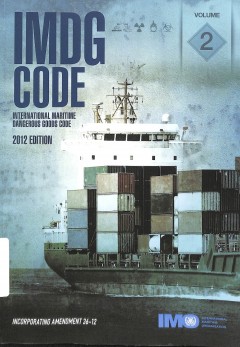
IMDG Code : International maritime dangerous goods code Volume 2
- Edisi
- 2012 Ed. Vol. 2
- ISBN/ISSN
- 978-92-801-1561-1
- Deskripsi Fisik
- v, 369 p., 28 cm
- Judul Seri
- -
- No. Panggil
- REF MR IMO i
- Edisi
- 2012 Ed. Vol. 2
- ISBN/ISSN
- 978-92-801-1561-1
- Deskripsi Fisik
- v, 369 p., 28 cm
- Judul Seri
- -
- No. Panggil
- REF MR IMO i
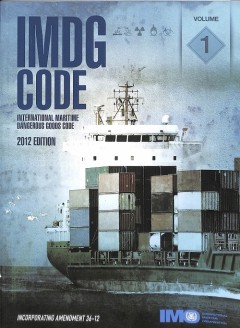
IMDG Code : International maritime dangerous goods code Volume 1
- Edisi
- 2012 Ed. Vol. 1
- ISBN/ISSN
- 978-92-801-15611
- Deskripsi Fisik
- xiv, 481 p., 33 cm
- Judul Seri
- -
- No. Panggil
- REF MR IMO i
- Edisi
- 2012 Ed. Vol. 1
- ISBN/ISSN
- 978-92-801-15611
- Deskripsi Fisik
- xiv, 481 p., 33 cm
- Judul Seri
- -
- No. Panggil
- REF MR IMO i

Proficiency in survival craft and rescue boats other than fast rescue boats
The purpose of the IMO model courses is to assist maritime training institutes and their teaching staff in organzing and introducing new training courses, or in enching, updating or supplementing existing training material where the quality and effectiveness of the training course may thereby be improved
- Edisi
- 2000 Ed.
- ISBN/ISSN
- 978-92-801-6115-1
- Deskripsi Fisik
- v, 68 p., 33 cm
- Judul Seri
- -
- No. Panggil
- TXT PO IMO p
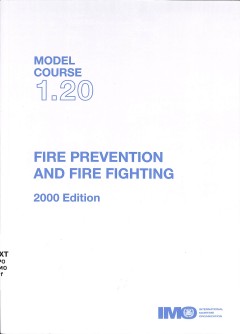
Fire prevention and fire fighting
the purpose of the IMO model courses is to asssistmaritime training instituds and their teaching staff in orgaizing and introducting new training courses, or in enhancing, updating or supplementing exiting training material where the quality and effectiveness of the training courses may thereby be improved
- Edisi
- 2000 Ed.
- ISBN/ISSN
- 978-92-801-5081-0
- Deskripsi Fisik
- v, 56 p., 33 cm
- Judul Seri
- Model Course 1.20
- No. Panggil
- TXT PO IMO f
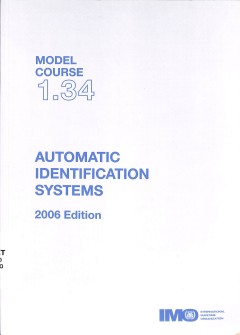
Automatic identification systems : model course 1.34
- Edisi
- 2006 Ed.
- ISBN/ISSN
- 978-92-801-4227-3
- Deskripsi Fisik
- v, 102 p., 33 cm
- Judul Seri
- -
- No. Panggil
- TXT PO IMO a
- Edisi
- 2006 Ed.
- ISBN/ISSN
- 978-92-801-4227-3
- Deskripsi Fisik
- v, 102 p., 33 cm
- Judul Seri
- -
- No. Panggil
- TXT PO IMO a
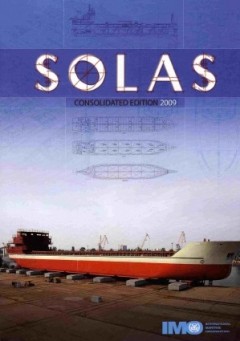
Solas : consolidated edition 2009
Of all the international conventions dealing with maritime safety, the most important is the International Convention for the Safety of Life at Sea, better known as SOLAS, which covers a wide range of measures designed to improve the safety of shipping. The Convention is also one of the oldest of its kind: the first version was adopted in 1914 following the sinking of the Titanic with the loss …
- Edisi
- Fifth Edition
- ISBN/ISSN
- 978-92-801-1505-5
- Deskripsi Fisik
- viii, 418 hlm., 33 cm
- Judul Seri
- -
- No. Panggil
- TXT MR IMO s
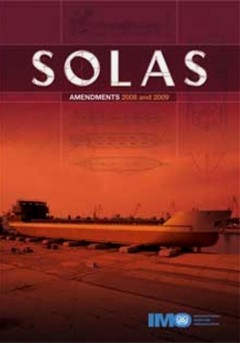
Solas : Amendments 2008 and 2009
- Edisi
- -
- ISBN/ISSN
- 978-92-801-1520-8
- Deskripsi Fisik
- viii, 78 p., 21 cm
- Judul Seri
- -
- No. Panggil
- TXT MR IMO s
- Edisi
- -
- ISBN/ISSN
- 978-92-801-1520-8
- Deskripsi Fisik
- viii, 78 p., 21 cm
- Judul Seri
- -
- No. Panggil
- TXT MR IMO s
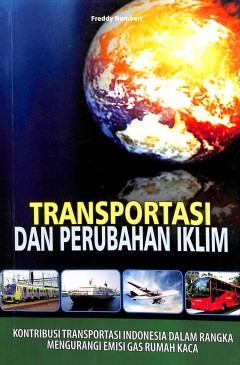
Transportasi dan perubahan iklim : kontribusi transportasi Indonesia dalam ra…
Transportasi dan perubahan iklim : kontribusi transportasi Indonesia dalam rangka mengurangi emisi gas rumah kaca
- Edisi
- -
- ISBN/ISSN
- 978-979-773-027-7
- Deskripsi Fisik
- xxviii, 284 p., ; illus : 19 cm ; index
- Judul Seri
- -
- No. Panggil
- LC 332.6 NUM t

General operator's certificate for the global maritime distress and safety sy…
- Edisi
- 2004 Ed.
- ISBN/ISSN
- 978-92-801-4181-8
- Deskripsi Fisik
- v. 368 p., 33 cm
- Judul Seri
- Model Course 1.25
- No. Panggil
- MR IMO g
- Edisi
- 2004 Ed.
- ISBN/ISSN
- 978-92-801-4181-8
- Deskripsi Fisik
- v. 368 p., 33 cm
- Judul Seri
- Model Course 1.25
- No. Panggil
- MR IMO g

International recent issues about ecdis, e-navigation and safety at sea : mar…
The TransNav 2011 Symposium held at the Gdynia Maritime University, Poland in June 2011 has brought together a wide range of participants from all over the world. The program has offered a variety of contributions, allowing to look at many aspects of the navigational safety from various different points of view. Topics presented and discussed at the Symposium were: navigation, safety at …
- Edisi
- -
- ISBN/ISSN
- 978-0-415-69112-3
- Deskripsi Fisik
- 199 p, 21 cm
- Judul Seri
- -
- No. Panggil
- TXT MR WEI i

Elements of Oil-Tanker Transportation
The marine transportation of oil is also a vital artery linking production areas to refineries. And so, the purpose and aim of this book has been to present and examine some of the most important parts of oil-tanker transportation in order that the transportation of oil from production field to refinery be evaluated systematically.
This book will allow oil transportation analysts to evaluat…
- Edisi
- -
- ISBN/ISSN
- 0-87814-184-7
- Deskripsi Fisik
- xix, 513 p., : illus : index : 29 cm
- Judul Seri
- -
- No. Panggil
- TXT PO MAR e C.1

Inaccuracy in traffic forecasts: lying or strategizing? A contextualist analy…
The purpose of this paper is to look into the fate of a troubled initiative in Hong Kong that was developed in the midst of discussions between Beijing and London leading towards the 1997 handover. It sets out to shred new light on the “forecasting gap”: the gap between the anticipated level of traffic and the real volume of traffic in the years following the opening of a new infrastructure
- Edisi
- Vol. 1 No. 1, 2009 pp. 7-22
- ISBN/ISSN
- 1757-4323
- Deskripsi Fisik
- 18 p.
- Judul Seri
- Asia-Pacific Journal of Business Administration
- No. Panggil
- ATC MR DUF i

THE ROLE OF TRANSPORTATION IN LOGISTICS CHAIN
The operation of transportation determines the efficiency of moving products. The progress in techniques and management principles improves the moving load, delivery speed, service quality, operation costs, the usage of facilities and energy saving. Transportation takes a crucial part in the manipulation of logistic. Reviewing the current condition, a strong system needs a clear frame of logist…
- Edisi
- Vol. 5, pp. 1657 - 1672, 2005
- ISBN/ISSN
- 1657 - 1672
- Deskripsi Fisik
- 16 p.
- Judul Seri
- Proceedings of the Eastern Asia Society for Transportation Studies
- No. Panggil
- ATC LO TSE t

Scheduling operations of a rail crane and container deliveries between rail a…
This article addresses the problem of scheduling container transfer operations in rail terminals. The overall problem can be divided into three smaller problems: constructing a dual-cycle delivery task by matching inbound and outbound containers; determining parking positions for trucks; and sequencing the delivery tasks for transfer by the rail crane. This article provides a mathematical model…
- Edisi
- Vol. 43, No. 6, June 2011, 597–613
- ISBN/ISSN
- 1029-0273
- Deskripsi Fisik
- 18 p.
- Judul Seri
- Engineering Optimization
- No. Panggil
- ATC LO JEO s

Optimal pricing and terminal location for a rail–truck intermodal service �…
To be competitive with other modes of transport, railways need to be cost-effective. In order to become more competitive in the logistics sector, Indian Railways has taken new initiatives to improve their operations in recent years. A rail–truck intermodal transportation service for Indian Railways is described in this paper. The main focus of the research presented in this paper is on the jo…
- Edisi
- Vol. 14, No. 5, October 2011, 335–349
- ISBN/ISSN
- 1469-848X
- Deskripsi Fisik
- 17 p.
- Judul Seri
- International Journal of Logistics Research and Applications: A Leading Journal of Supply Chain Management
- No. Panggil
- ATC LO DAN o

Optimal collaborative transportation service trading in B2B e-commerce logistics
This paper investigates a less-than-truckload carrier collaboration decision-making problem in the e-commerce logistics network. E-commerce less-than-truckload carrier collaboration problem considers multiple logistics service providers (LSPs) forming a collaborative alliance in an e-commerce logistics network. They share their transportation requests and vehicle capabilities to maximise the to…
- Edisi
- 2017
- ISBN/ISSN
- 1366-588X
- Deskripsi Fisik
- 18 p.
- Judul Seri
- International Journal of Production Research
- No. Panggil
- ATC LO ZHA o

Lean and green in the transport and logistics sector – a case study of simu…
The transport and logistics sector is of vital importance for the stimulation of trade and hence the economic development of nations. However, over the last few years, this sector has taken central stage in the green agenda due to the negative environmental effects derived from its operations. Several disciplines including operations research and sub-areas of supply chain management such as gre…
- Edisi
- 2016
- ISBN/ISSN
- 1366-5871
- Deskripsi Fisik
- 13 p.
- Judul Seri
- Production Planning & Control The Management of Operations
- No. Panggil
- ATC LO REY l

Impact of scale increase of container ships on the generalised chain cost
In recent years, an increase in the size of the container ships could be observed. The question is how these larger ships will influence the total generalised costs from a port of loading to a destination in the European hinterland. The second question is whether a scale increase of the container ships on other loops, such as a loop from the United States to Europe, has the same impact on the g…
- Edisi
- Vol. 43, No. 2, 192–208
- ISBN/ISSN
- 1464-5254
- Deskripsi Fisik
- 18 p.
- Judul Seri
- Maritime Policy & Management The flagship journal of international shipping and port research
- No. Panggil
- ATC LO HAS i

Deriving decision rules to locate export containers in container yards
A methodology is proposed to determine the storage location of an arriving export container considering its weight. We consider the con®guration of the container stack and the weight distribution of containers in the yard-bay. A dynamic programming model is formulated to determine the storage location to minimize the number of relocation movements expected for the loading operation. We also de…
- Edisi
- 2000
- ISBN/ISSN
- -
- Deskripsi Fisik
- 13 p.
- Judul Seri
- EUROPEAN JOURNAL OF OPERATIONAL RESEARCH
- No. Panggil
- ATC LO KIM d

Carbon management in the logistics and transportation sector: an overview and…
While many studies have addressed the issue of environmental sustainability within the supply chain as a whole, so far no attempt has been made to specifically investigate the current status of carbon management issues in the logistics and freight transportation sector. This paper aims to fill this gap by providing a systematic literature review of publications in the area of carbon management …
- Edisi
- 2017
- ISBN/ISSN
- 1758-3012
- Deskripsi Fisik
- 20 P.
- Judul Seri
- Carbon Management
- No. Panggil
- ATC LO HER c

An approach to determine storage locations of containers at seaport terminals
This paper models the seaport system with the objective of determining the optimal storage strategy for various container-handling schedules. A container location model (CLM) is developed, with an objective function designed to minimise the turn around time of container ships, and solved using genetic algorithm (GA). The results section presents an analyses of di!erent resource levels and a com…
- Edisi
- 2001
- ISBN/ISSN
- -
- Deskripsi Fisik
- 12 p.
- Judul Seri
- -
- No. Panggil
- ATC PO PRE a

Container transportation service demand simulation model for United States co…
Assessing the potential demand for container ports and related multimodal transportation is critical for several purposes, including financial feasibility analysis and the evaluation of net economic benefits and their distribution. When developed in conjunction with a geographical information system, portrelated demand analysis also provides needed input for assessment of selected environmental…
- Edisi
- 2003
- ISBN/ISSN
- -
- Deskripsi Fisik
- 22p
- Judul Seri
- Maritime Economics & Logistics,
- No. Panggil
- ATC LO LUO c

A note on a dynamic space-allocation method for outbound containers
Storage space is a critical resource in port container terminals. This paper discusses how to allocate storage space for outbound containers that will arrive at a storage yard. The main objectives of space allocation are to utilize space efficiently and make loading operations more efficient. Objective functions and constraints of both the direct and the indirect transfer systems are described …
- Edisi
- 22 November 1999
- ISBN/ISSN
- -
- Deskripsi Fisik
- 10p
- Judul Seri
- European Journal of Operational
- No. Panggil
- ATC LO KIM a

Economies of Speed in Sea Transportation
Investing in large ships has been the traditional way of increasing the capacity of cargo transportation and raising the profitability of shipping through higher freight income. The economies of scale have been achieved, however, at higher fixed costs and higher operational risks because of fluctuating demand for transportation services. A more flexible way to increase the cargo carrying capaci…
- Edisi
- Vol. 24 No. 8, 1994, pp. 33-41
- ISBN/ISSN
- -
- Deskripsi Fisik
- 11P
- Judul Seri
- International Journal of Physical Distribution & Logistics Management
- No. Panggil
- ATC LO LAI e

PORTSIM 5: Modeling from a Seaport Level
This paper describes PORTSIM 5, a discrete-event seaport simulation model. Specifically, we discuss the developmental efforts and existing system limitations that have led up to the current efforts being undertaken by the Military Traffic Management Command Transportation Engineering Agency and Argonne National Laboratory. PORTSIM 5 builds on the knowledge and expertise gained from two precedin…
- Edisi
- -
- ISBN/ISSN
- 0895-7177
- Deskripsi Fisik
- 17 p.
- Judul Seri
- Mathematical and Computer Modelling
- No. Panggil
- ATC PO ARD p

Optimising Container Transfers at Multimodal Terminals
The use of containers have greatly reduced handling operations at ports and at all other transfer points, thus increasing the efficiency and speed of transportation. This was done in an attempt to cut down the cost of maritime transport, mainly by reducing cargo handling and costs, and ships’ time in port by speeding up handling operations. This paper discusses the major factors influencing …
- Edisi
- -
- ISBN/ISSN
- 0895-7177
- Deskripsi Fisik
- 9 p.
- Judul Seri
- Mathematical and Computer Modelling
- No. Panggil
- ATC PO ZAN o

Optimal shipping routes and vessel size for intermodal barge transport with e…
Despite the growing role of barge transportation in the hinterland access of major seaports in Northwestern Europe, service network design for intermodal barge transportation has received little research attention. In this paper, a decision support model for service network design in intermodal barge transportation is presented. The model determines optimal shipping routes for roundtrip service…
- Edisi
- -
- ISBN/ISSN
- 0166-3615
- Deskripsi Fisik
- 10 p.
- Judul Seri
- Computers in Industry
- No. Panggil
- ATC PO ERS o

Evaluation methodologies of transportation projects in Japan
This paper examines the system and manuals for transportation project evaluation, which are recently introduced for all transportation modes, road, railway, airport and seaport projects in Japan. The manuals aim to evaluate the social signi®cance of projects from the viewpoint of ef®ciency and equity, by applying a sort of multi-criterion analysis, although adopting the cost bene®t analysis …
- Edisi
- -
- ISBN/ISSN
- 0967-0700
- Deskripsi Fisik
- 6 p.
- Judul Seri
- Transport Policy
- No. Panggil
- ATC PO UGI e

Development of Advanced Technologies (AT) in Green Transport Corridors
The paper presents tendency analysis for advanced technologies. Advanced technologies – is an area having different acceptability and local adaptation levels in different countries, thus it is particularly important to be acquainted with its application possibilities and techniques. Contributing to a more efficient use of existing transport infrastructure, AT becomes a powerful tool in improv…
- Edisi
- -
- ISBN/ISSN
- 1877-7058
- Deskripsi Fisik
- 9 p.
- Judul Seri
- ScienceDirect
- No. Panggil
- ATC PO ENE d

Border-crossing constraints, railways and transit transports in Estonia
North-East Europe has served as a general cargo transit area for Russia and other emerging economies of the East for decades. Typically, this activity was initiated with road transport, but after some years of operation, bordercrossings became problematic and in some cases even impossible to conduct. Volume of transit transport was therefore severely constrained. As one remedy to sustain transi…
- Edisi
- -
- ISBN/ISSN
- 2210-5395
- Deskripsi Fisik
- 8 p.
- Judul Seri
- Research in Transportation Business & Management
- No. Panggil
- ATC PO OLA b

Analyzing the spatial–temporal evolution of a gateway’s hinterland: A cas…
- Edisi
- -
- ISBN/ISSN
- 1366-5545
- Deskripsi Fisik
- 13 p.
- Judul Seri
- Transportation Research Part E
- No. Panggil
- ATC PO ANG a
- Edisi
- -
- ISBN/ISSN
- 1366-5545
- Deskripsi Fisik
- 13 p.
- Judul Seri
- Transportation Research Part E
- No. Panggil
- ATC PO ANG a
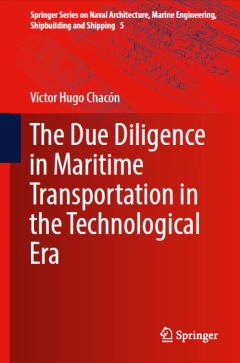
The due diligence in maritime transportation in the technological era
- Edisi
- -
- ISBN/ISSN
- 978-3-319-66002-8
- Deskripsi Fisik
- -
- Judul Seri
- -
- No. Panggil
- TXT MR Cha t
- Edisi
- -
- ISBN/ISSN
- 978-3-319-66002-8
- Deskripsi Fisik
- -
- Judul Seri
- -
- No. Panggil
- TXT MR Cha t

The optimal admission and dispatching control policy of a two-terminal transp…
A vehicle provides transportation services between two terminals. Customers requesting services to the other terminal arrive at each of the two terminals according to independent Poisson processes. Each accepted customer brings in a random reward, and there are linear holding and transportation costs incurred by the accepted customers. Each rejected customer incurs a fixed penalty cost. The int…
- Edisi
- -
- ISBN/ISSN
- -
- Deskripsi Fisik
- 13 p.
- Judul Seri
- IIE Transactions
- No. Panggil
- ATC LO WAH t

A mixed-integer programming model for global logistics transportation problems
In today’s highly competitive global environment, companies are forced to compete on price and delivery speed. Global logistics transportation presents some special challenges and issues for business organizations, and these issues differ from those posed by domestic logistics transportation. This study considers road transportation problems between two countries. A mixed-integer programming …
- Edisi
- Vol. 39, No. 3, March 2008, 217–228
- ISBN/ISSN
- 0020–7721
- Deskripsi Fisik
- 13 p.
- Judul Seri
- International Journal of Systems Science
- No. Panggil
- ATC LO WUY a

Lifelines performance of the Mw 8.8 off shore Biobío, Chile Earthquake
- Edisi
- -
- ISBN/ISSN
- -
- Deskripsi Fisik
- 9 p.
- Judul Seri
- -
- No. Panggil
- ATC PO ASC l
- Edisi
- -
- ISBN/ISSN
- -
- Deskripsi Fisik
- 9 p.
- Judul Seri
- -
- No. Panggil
- ATC PO ASC l

Evaluation of cold ironing and speed reduction policies to reduce ship emissi…
Different port operating policies have the potential to reduce emissions from shipping; however, their efficacy varies for different ports. This article extends existing literature to present a consistent and transferable methodology that examines emissions reduction port policies based on ship-call data. Carbon dioxide (CO2); sulphur dioxide (SO2); nitrogen oxides (NOx); and black carbon (BC) …
- Edisi
- Vol. 16, 4, 371–398
- ISBN/ISSN
- -
- Deskripsi Fisik
- 2008
- Judul Seri
- -
- No. Panggil
- ATC MR WAS e

Port economics, policy and management: content classification and survey
This paper presents a taxonomy and analysis of the content of publishedresearch in port economics, policy and management (port studies). The recent increase of these publications suggests a growing interest in the study of ports. However, the research characteristics and directions of this research field are unidentified. This paper provides a systematic analysis of port studies published duri…
- Edisi
- Vol. 31, No.4, 445–471
- ISBN/ISSN
- -
- Deskripsi Fisik
- 28 p.
- Judul Seri
- -
- No. Panggil
- ATC PO PAL p
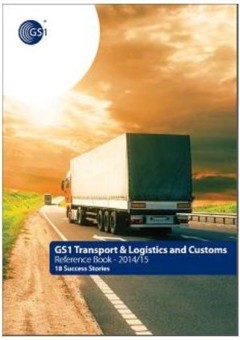
GS1 Transport & Logistics and Customs
Welcome to the GS1 Reference Book for Transport & Logistics (T&L) and Customs. Through this collection of stories, players around the world share their experiences of how GS1 Standards are truly making a difference in their operations. You will learn about their initiatives, best practices and “what’s working” when integrating standards into transport, logistics and Customs processes. Usi…
- Edisi
- -
- ISBN/ISSN
- -
- Deskripsi Fisik
- 56 pages
- Judul Seri
- -
- No. Panggil
- TXT LO GS1 g
safety and shipping review 2013
In 2012, two high profile maritime incidents pushed shipping safety into the public eye once more with the loss of the Costa Concordia off Italy in January followed in February by that of the Rabaul Queen ferry, off Papua New Guinea. Both events caused a tragic loss of life. However, while these incidents have dominated public ship safety discussions, statistics reveal that reported total losse…
- Edisi
- -
- ISBN/ISSN
- -
- Deskripsi Fisik
- 13 pages
- Judul Seri
- An annual review of trends and developments in shipping losses and safety – January 2013
- No. Panggil
- TXT LO ALI s

A social network analysis of business logistics and transportation
- Edisi
- Vol. 28 Iss 5 pp
- ISBN/ISSN
- 0960-0035
- Deskripsi Fisik
- -
- Judul Seri
- International Journal of Physical Distribution & Logistics Management
- No. Panggil
- ATC LO PHI a
- Edisi
- Vol. 28 Iss 5 pp
- ISBN/ISSN
- 0960-0035
- Deskripsi Fisik
- -
- Judul Seri
- International Journal of Physical Distribution & Logistics Management
- No. Panggil
- ATC LO PHI a
Transport Logistics shared solutions for common challange
The mission of the OECD Programme of Research on Road Transport and Intermodal Linkages (RTR) is to promote economic development in its Member countries by enhancing transport safety, efficiency and sustainability through a co-operative research programme on road and intermodal transport. To achieve this objective, the Programme recommends options for the development and implementation of effec…
- Edisi
- -
- ISBN/ISSN
- -
- Deskripsi Fisik
- 53 pages
- Judul Seri
- -
- No. Panggil
- TXT LO OEC t

Logistics and Transportation Security: A Strategic, Tactical, and Operational…
"Professor Burns has captured the essence of transportation security, one of today's most pressing concerns. As the rate of globalization and world trade increases, security and supply chain resilience are at the core of one’s global transportation network. This is a timely and well written contribution to the industry." —John A. Moseley, Senior Director of Trade Development, Port of Houst…
- Edisi
- -
- ISBN/ISSN
- 978-1-4822-5308-5
- Deskripsi Fisik
- xxxix, 359 p
- Judul Seri
- -
- No. Panggil
- TXT LO BUR l

The role of truck driver on sustainable transportation and logistics
The purpose of this paper is to identify traits and skills of a truck driver for sustainable transportation, develop a theoretical framework and outline further research directions.
- Edisi
- Vol. 47 Iss 3 pp. 127 - 134
- ISBN/ISSN
- -
- Deskripsi Fisik
- 9 p.
- Judul Seri
- Industrial and Commercial Training
- No. Panggil
- ATC LO GUN t

Developing a framework for evaluating the logistics costs in global sourcing …
Global sourcing is becoming a prerequisite for companies competing in today’s market. The logistics costs often comprise a large portion of the total global sourcing cost, thereby determining the effectiveness of this procurement strategy. However, evaluating the logistics cost in a global context is frequently difficult. This paper presents a five-step evaluation framework and illustrates ho…
- Edisi
- Vol. 33 No. 9, 2003
- ISBN/ISSN
- -
- Deskripsi Fisik
- 22 p.
- Judul Seri
- International Journal of Physical Distribution & Logistics Management
- No. Panggil
- ATC LO ROS d

Trends in computer applications in transportation and distribution management
In the past few years significant changes in computer technology have taken place. The development of the mini and micro computer for business applications has occurred in the past five years. New mass storage devices, faster central processing units and more sophisticated input/output devices have also been developed recently. These technological developments have fostered further use of the c…
- Edisi
- Vol. 7 Issue: 3
- ISBN/ISSN
- -
- Deskripsi Fisik
- 15 p.
- Judul Seri
- International Journal of Physical Distribution
- No. Panggil
- ATC LO JAC t

Outsourcing logistics activities in Turkey
This research aims to determine the current situation of outsourcing logistics activities in Turkey, a country which has a great potential for logistics activities among the surrounding continents because of its geographical location.
- Edisi
- Vol. 18 Issue: 3
- ISBN/ISSN
- -
- Deskripsi Fisik
- 17 p.
- Judul Seri
- Journal of Enterprise Information Management
- No. Panggil
- ATC LO ULE o

Some logistics realities in Indochina
Indochina has undergone tremendous change in the past decade to achieve good economic performance. However, the continuation of this strong economic performance depends on an efficient logistics infrastructure. Examines the region's logistics realities. Specifically, the paper finds that the logistics infrastructure is still rather backward with inadequate transportation networks, inefficient c…
- Edisi
- Vol. 30 No. 10, 2000, pp. 887-911.
- ISBN/ISSN
- -
- Deskripsi Fisik
- 28 p .
- Judul Seri
- International Journal of Physical Distribution & Logistics Management
- No. Panggil
- ATC LO ANG s
 Karya Umum
Karya Umum  Filsafat
Filsafat  Agama
Agama  Ilmu-ilmu Sosial
Ilmu-ilmu Sosial  Bahasa
Bahasa  Ilmu-ilmu Murni
Ilmu-ilmu Murni  Ilmu-ilmu Terapan
Ilmu-ilmu Terapan  Kesenian, Hiburan, dan Olahraga
Kesenian, Hiburan, dan Olahraga  Kesusastraan
Kesusastraan  Geografi dan Sejarah
Geografi dan Sejarah